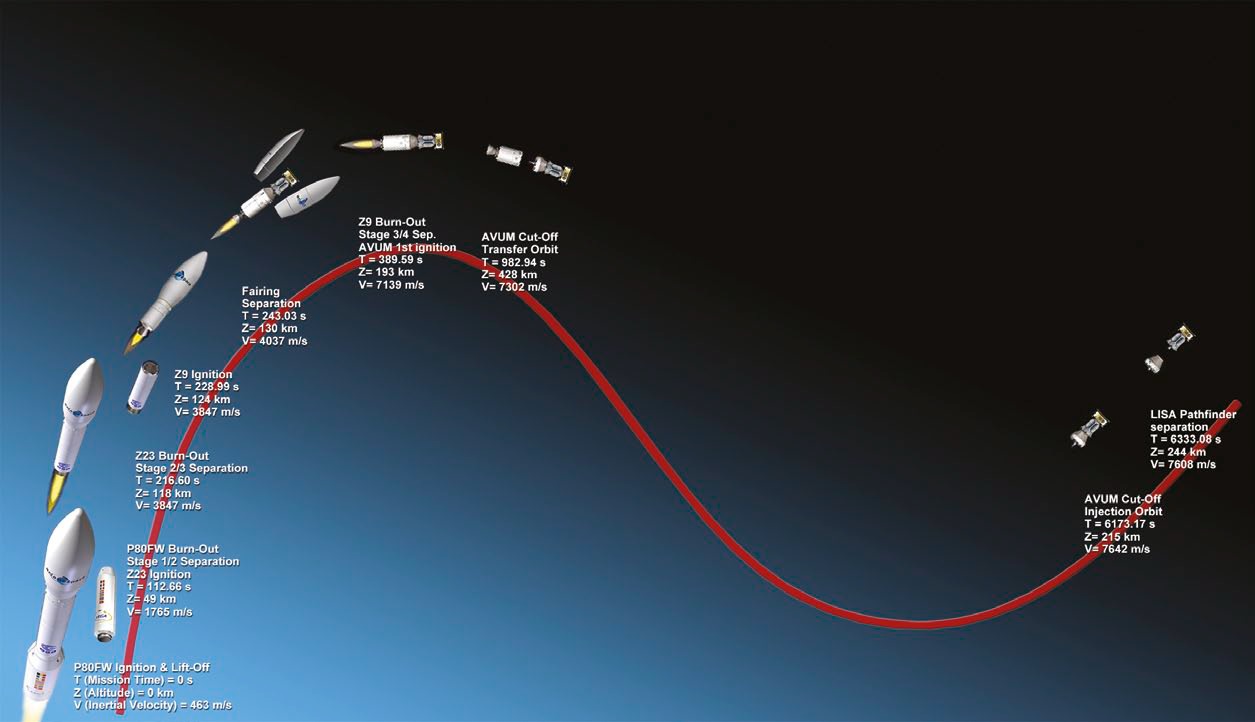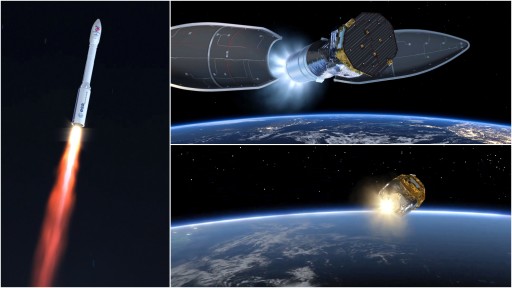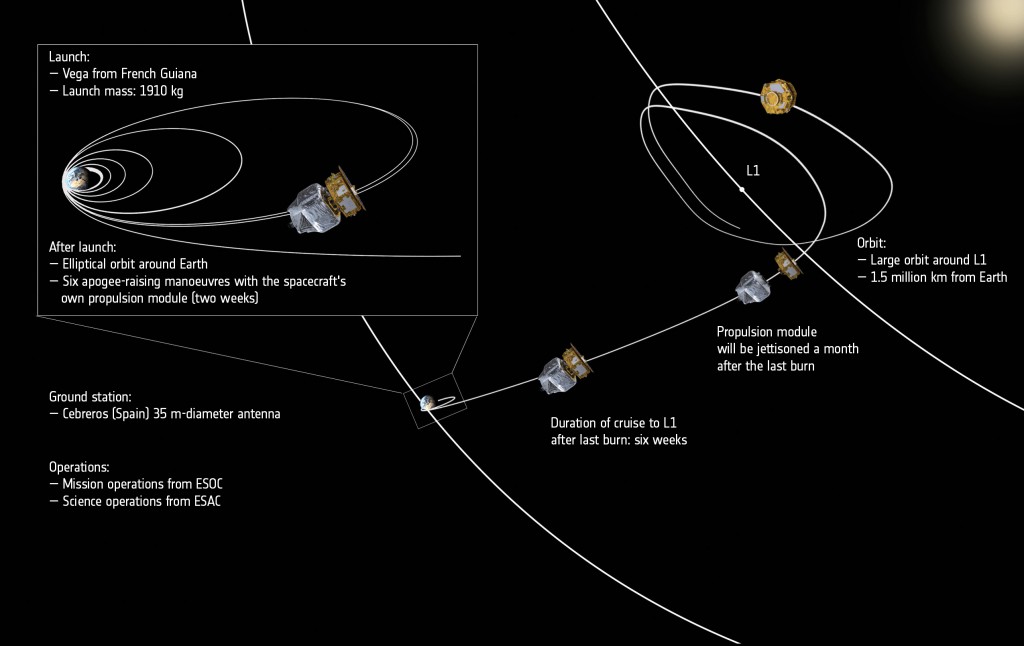Vega VV06 (LISA Pathfinder)
Launch Timeline
| Time | Event | Altitude (km) | Velocity (km/s) |
|---|---|---|---|
| T-00:04:00 | Synchronized Countdown Sequence | ||
| T-00:00:00 | P80 Ignition & LIFTOFF | 0 | 0.463 |
| T+00:00:35 | Mach 1 | ||
| T+00:01:52.66 | P80 Burnout & Separation | 49 | 1.765 |
| T+00:01:54 | Zefiro-23 Ignition | ||
| T+00:03:11 | Zefiro-23 Burnout | ||
| T+00:03:36.60 | Zefiro-23 Separation | 118 | 3.847 |
| T+00:03:48.99 | Zefiro-9 Ignition | 124 | 3.847 |
| T+00:04:03.03 | Payload Fairing Separation | 130 | 4.037 |
| T+00:05:40 | Zefiro-9 Burnout | ||
| T+00:06:29.59 | Zefiro-9 Separation | 193 | 7.139 |
| T+00:07:29 | AVUM - 1st Ignition | ||
| T+00:16:22.94 | AVUM Shutdown | 428 | 7.302 |
| T+01:41:19 | AVUM - 2nd Ignition | ||
| T+01:42:53.17 | AVUM Shutdown | 215 | 7.642 |
| T+01:45:33.08 | LISA Pathfinder Separation | 244 | 7.608 |
| T+01:55:10 | AVUM - Deorbit Burn Start | ||
| T+01:55:17 | AVUM Shutdown |
Target Orbit
Type: Elliptical Low Earth Orbit
Perigee: 207 km
Apogee: 1,540 km
Inclination: 5.96°
Payload Mass: 1,906 kg
Launch Profile
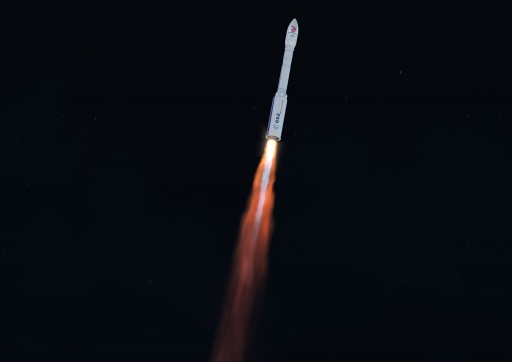
Prior to launch, the LISA Pathfinder is powered up for final testing activities and reconfigurations for its flight with its the spacecraft switches to internal power.
The Vega launch vehicle made its first flight in 2012 as the lightest in the family of launch vehicles operated by Arianespace, entering service alongside the medium-lift Soyuz and the heavy-lift Ariane 5 rockets. Prior to LISA Pathfinder, Vega made five successful launches as part of its certification program, clearing the launcher for operational missions.
Vega is a three-stage launch vehicle using all-solid stages and an additional liquid-fueled fourth stage known as the Attitude Vernier Upper Module, AVUM, that gives the vehicle the ability to target a range of orbits and conduct precise orbital insertion maneuvers. Overall, Vega stands 29.9 meters tall with a diameter of 3.03 meters and a launch mass of 137 metric tons. It can deliver up to 2,500 Kilograms into Low Earth Orbit.
Being a solid-fueled vehicle with an upper stage that uses storable propellants, Vega’s countdown is not as complex as that of other launchers since no dynamic events such as tanking are required. The countdown includes a full checkout of all subsystems of the launch vehicle including the Flight Control System and reconfigurations of said system to transition the vehicle into a launch configuration.
Liftoff of Vega and LISA Pathfinder is targeted for 4:04:00 UTC on December 3, 2015 representing an instantaneous launch opportunity. The nominal length of Vega’s mission from launch to LPF separation is 1 hour, 45 minutes and 33 seconds.
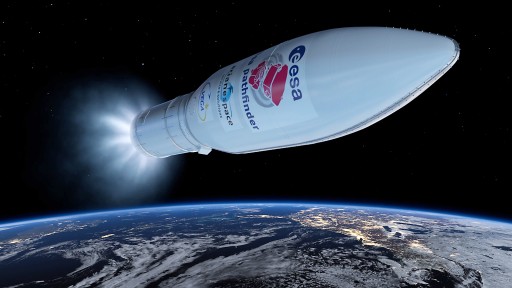
Upon ignition of the P80 first stage, Vega jumps off its launch pad with a total thrust of 230,600 Kilogram-force, starting a short vertical ascent before making a pitch and roll maneuver to start heading east-north-east – headed for a nearly equatorial orbit. The first stage of Vega burns through 88,365 Kilograms of solid propellant operating at a chamber pressure of 95 bar to deliver 2,261kN of sea level thrust. The stage is 11.2 meters long and employs an electromechanical thrust vector control system for vehicle stabilization.
The first stage burns for 112 seconds and separates from the second stage immediately after pressure sensors detect the pressure drop in its combustion chamber signaling the burnout of the stage. P80 delivers the vehicle to an altitude of 49 Kilometers and a speed of 1,765m/s, parting ways with the second stage 65km downrange from Kourou. Immediately after the pyrotechnic stage separation system is triggered, the Z23 second stage ignites achieving a thrust of 121,960 Kilogram force to continue powered ascent by burning 23,906 Kilograms of propellant over the course of a 77-second burn. The 8.4-meter long stage burns out 191 seconds into the flight at an altitude of 110 Kilometers and a velocity of 3.9km/s, at a point 275 Kilometers downrange. Separation from the Z9 third stage occurs after a delay of a few seconds, at T+3:37.
The Z9 stage of the vehicle will ignite after a short coast to finish boosting the vehicle out of the atmosphere. It measures 4.2 meters in length and has a reduced diameter of 1.9 meters, burning 10,115 Kilograms of propellants over the course of a burn of 110-seconds. Z9 operates at a nominal thrust of 22,940 Kilogram-force.
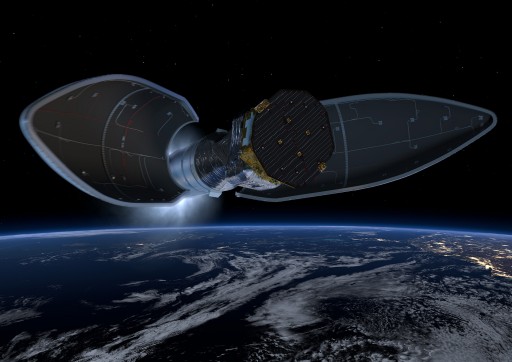
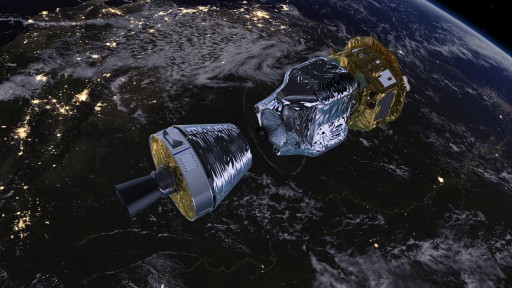
At T+4 minutes and 3 seconds, Vega jettisons its protective payload fairing that is 7.9 meters in length and 2.6 meters in diameter offering enough space for the LISA Pathfinder.
The Z9 stage burns out and remains attached to the vehicle until T+6 minutes and 30 seconds to allow residual thrust to tail off and ensure a clean separation through pyrotechnics and loaded springs.
The third stage delivers the vehicle to an altitude of 193km, a speed of 7,139m/s.
Once on its planned sub-orbital trajectory, the AVUM upper stage will assume control of the flight. AVUM, the Attitude and Vernier Upper Module, is 2.18 meters in diameter and 2 meters long holding a total of 550 Kilograms of Unsymmetrical Dimethylhydrazine and Nitrogen Tetroxide Propellants. The AVUM also houses the vehicle’s control system that is in charge of controlling all four stages of the launcher.
Ignition of the RD-869 engine of AVUM is set for T+7:29 on a burn of eight minutes and 54 seconds that delivers the spacecraft to a slightly elliptical Low Earth Parking Orbit. Shutdown of the AVUM is expected at T+16 minutes and 23 seconds at an altitude of 428 Kilometers and a speed of 7,302m/s.
AVUM continues its flight in coast mode to set up the proper parameters for the insertion orbit with respect to the orbit's argument of perigee, already targeting the spaceraft's Earth departure trajectory. The second burn of the AVUM is expected to last on minutes and 34 seconds starting one hour and 41 minutes into the flight. LISA Pathfinder is targeting an insertion orbit of 207 by 1,540 Kilometers at an inclination of 5.96 degrees. Spacecraft separation is expected at T+1:45:33 at an altitude of 244 Kilometers and a speed of 7.608km/s.
The AVUM upper stage is set for a final seven-second removal maneuver at T+1 hour and 55 minutes to conclude its mission.
From its insertion orbit, LISA Pathfinder will complete a series of engine burns to depart Earth and head to the L1 Sun-Earth Lagrange Point. Visit this page for a detailed Mission Overview.

